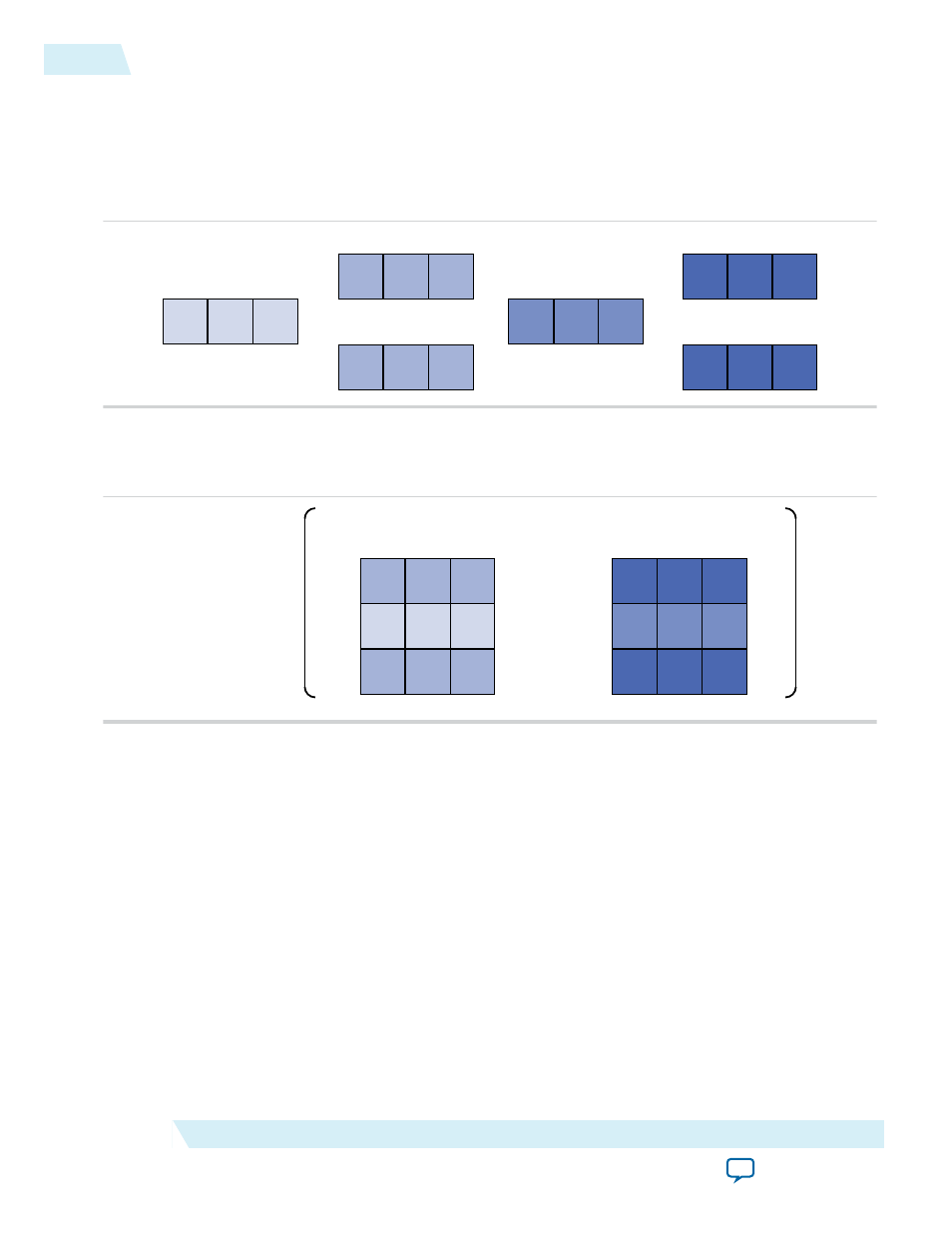Altera Video and Image Processing Suite User Manual
Page 163

missing in the current field by calculating a function of other pixels in the current field and the three
preceding fields as shown in the following sequence:
1. Pixels are collected from the current field and the three preceding it (the X denotes the location of the
desired output pixel).
Figure 12-1: Pixel Collection for the Motion-Adaptive Algorithm
Current Field (C)
C - 1
C - 2
C - 3
X
2. These pixels are assembled into two 3×3 groups of pixels. Figure 15–3shows the minimum absolute
difference of the two groups.
Figure 12-2: Pixel Assembly for the Motion-Adaptive Algorithm
Previous Frame
Current Frame
Motion = MAD
,
3. The minimum absolute difference value is normalized into the same range as the input pixel data. If
you select the Motion bleed algorithm, the function compares the motion value with a recorded
motion value for the same location in the previous frame. If it is greater, the function keeps the new
value; if the new value is less than the stored value, the function uses the motion value that is the mean
of the two values. This action reduces unpleasant flickering artefacts but increases the memory usage
and memory bandwidth requirements.
4. Two pixels are selected for interpolation by examining the 3×3 group of pixels from the more recent
two fields for edges. If the function detects a diagonal edge, the function selects two pixels from the
current field that lie on the diagonal, otherwise the function chooses the pixels directly above and
below the output pixel.
Note: The 4:2:2 compatibility mode prevents incorrect interpolation of the chroma samples along the
diagonal edges.
5. The function uses a weighted mean of the interpolation pixels to calculate the output pixel and the
equivalent to the output pixel in the previous field with the following equation:
12-4
Motion-Adaptive
UG-VIPSUITE
2015.05.04
Altera Corporation
Deinterlacing IP Cores
